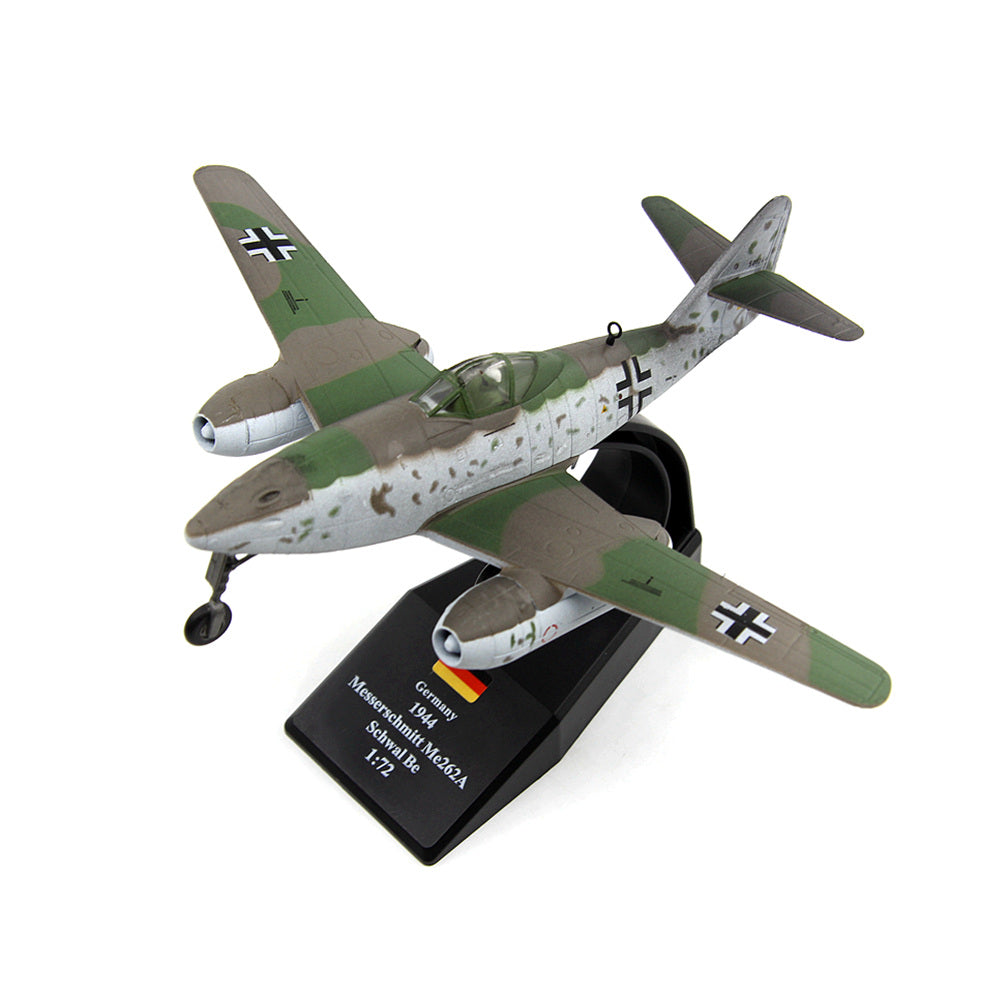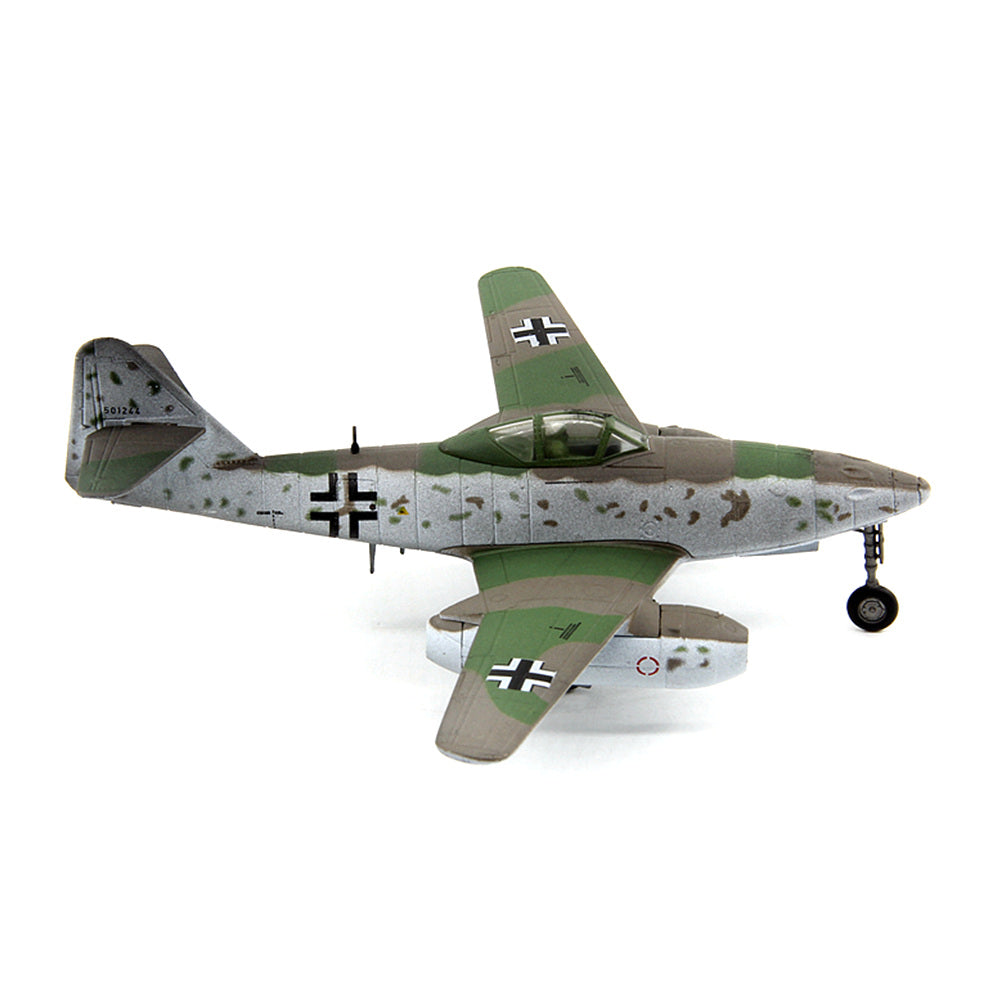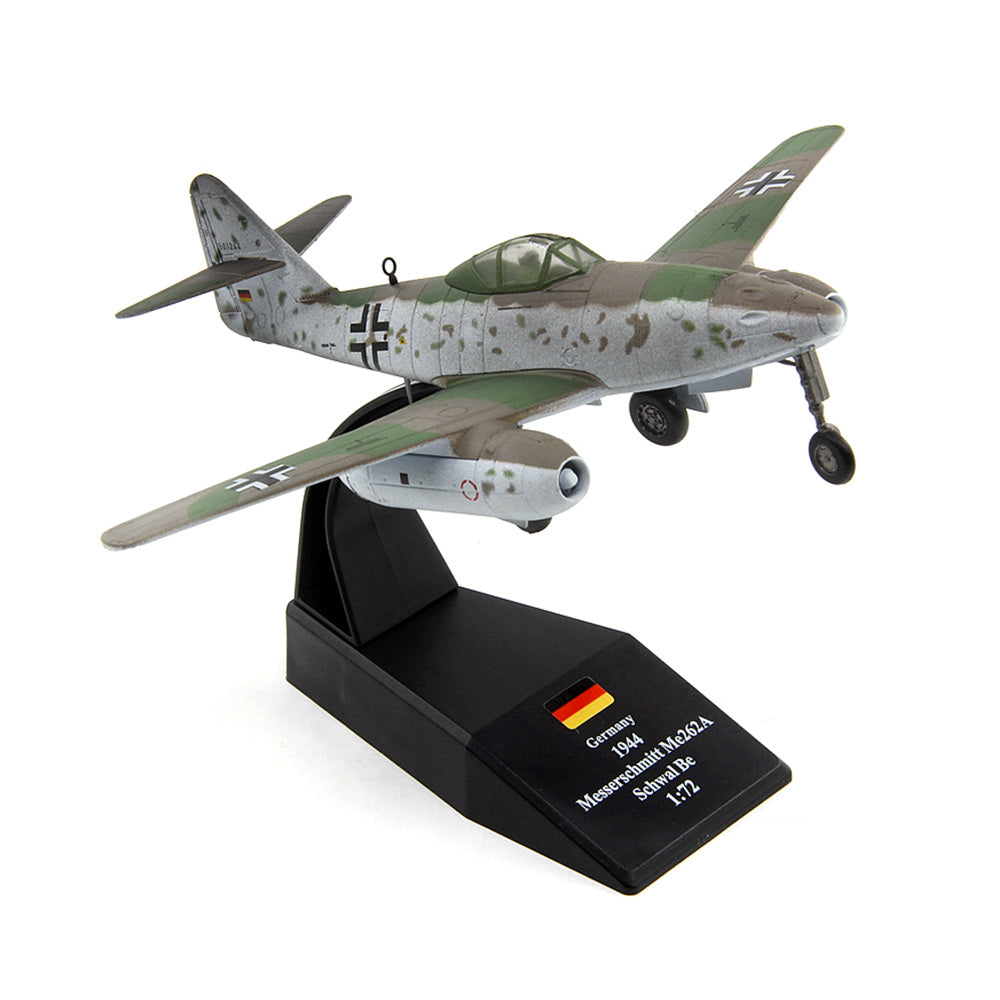old boy hobby
Messerschmitt Me 262 German Fighter 1/72 Scale Diecast Aircraft Model
Messerschmitt Me 262 German Fighter 1/72 Scale Diecast Aircraft Model
Couldn't load pickup availability
- diecast and pre-painted, ready to display
- material: metal & plastic
- scale: 1/72
- size: 15*17 cm
The Messerschmitt Me 262, nicknamed Schwalbe (German: "Swallow") in fighter versions, or Sturmvogel (German: "Storm Bird") in fighter-bomber versions, is a fighter aircraft and fighter-bomber that was designed and produced by the German aircraft manufacturer Messerschmitt. It was the world's first operational jet-powered fighter aircraft.
The initial design of what would become the Me 262 started in April 1939, prior to the start of the Second World War. While the aircraft performed its maiden flight on 18 April 1941, this was using piston engine instead of jet propulsion; it was not until 18 July 1942 that the first jet-powered flight was performed. Progress on the project was delayed by problems with engines, metallurgy and top-level interference from figures such as Hermann Göring, head of the Luftwaffe, and Adolf Hitler. The latter advocated from the Me 262 to be operated as a ground-attack/bomber aircraft rather than a defensive interceptor, thus necessitating a redesign. Accordingly, the aircraft was eventually brought into operational status with the Luftwaffe during mid-1944. In its operational configuration, the Me 262 was both faster and more heavily armed than any Allied fighter, including the British jet-powered Gloster Meteor. The Allies countered its effectiveness in the air by frequently attacking the aircraft while on the ground and during takeoff and landing.
Being one of the most advanced aviation designs to attain operational status during the Second World War, the Me 262's roles included light bomber, reconnaissance, and experimental night fighter versions. The Me 262 proved to be an effective dogfighter against Allied fighters; German pilots claimed a total of 542 Allied aircraft shot down, although higher claims have sometimes been made. Operations were plagued with reliability issues, which were largely a result of widespread strategic materials shortages as well as design compromises on the Junkers Jumo 004 axial-flow turbojet engines that powered it. Attacks by Allied forces on fuel supplies during the deteriorating late-war situation also reduced the effectiveness of the Me 262 as a fighting force. Armament production within Germany was focused on more easily manufactured aircraft. In the end, the Me 262 had a negligible impact on the course of the war as a result of its late introduction and the consequently small numbers that entered operational service.
While German use of the Me 262 ended with the close of the Second World War, a small number were operated by the Czechoslovak Air Force until 1951. Also, Israel was allegedly counted as a user of a handful (between two and eight) of Me 262s, which were supposedly built by Avia and supplied covertly, although there have been no official confirmations of such use. It also heavily influenced several designs, such as the Sukhoi Su-9 (1946) and Nakajima Kikka. Numerous captured Me 262s were studied and flight-tested by the major powers, and ultimately influenced the designs of post-war aircraft such as the North American F-86 Sabre, MiG-15 and Boeing B-47 Stratojet. Several aircraft have survived on static display in museums, while multiple privately built flying reproductions have also been produced; these are commonly powered by modern General Electric CJ610 engines.
--copied from Wikipedia
Share
















